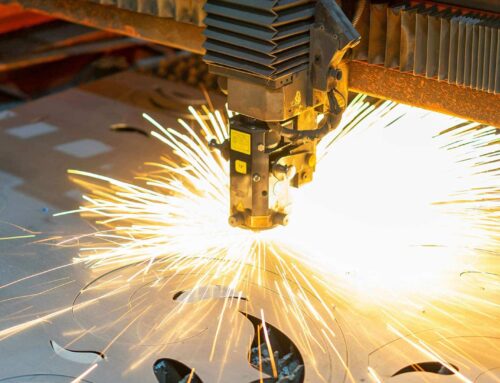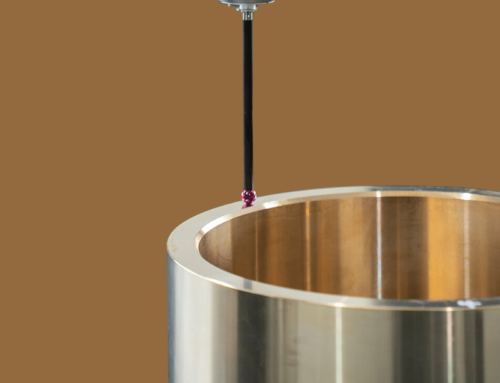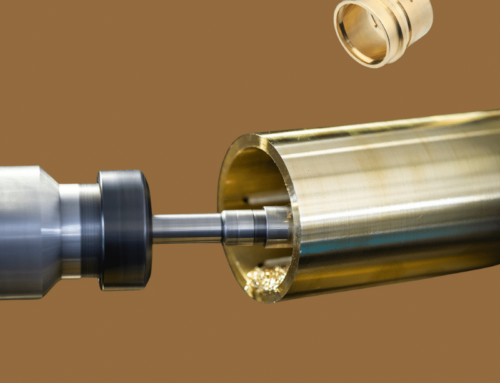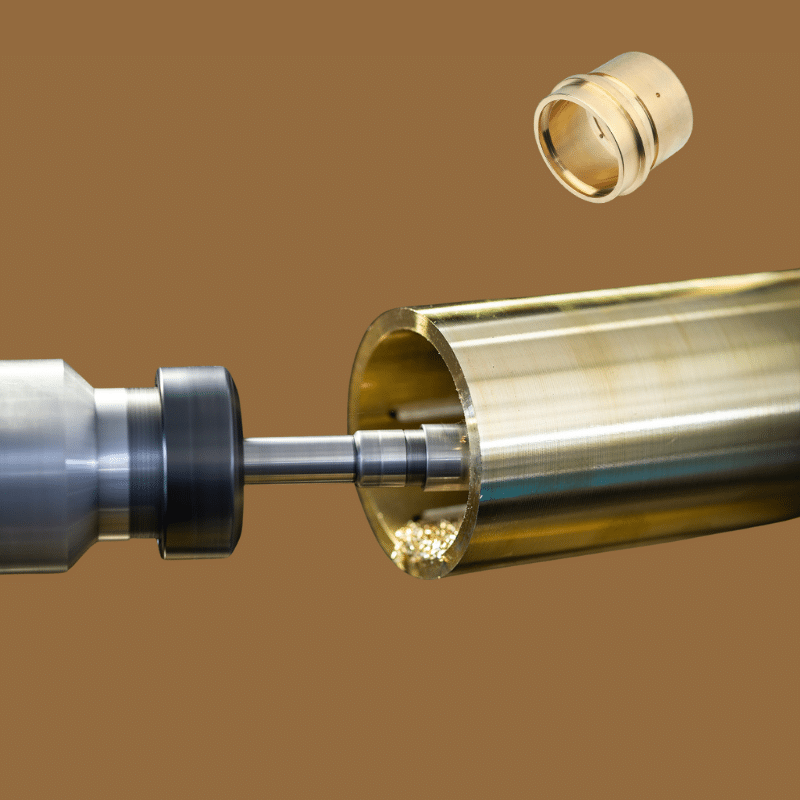
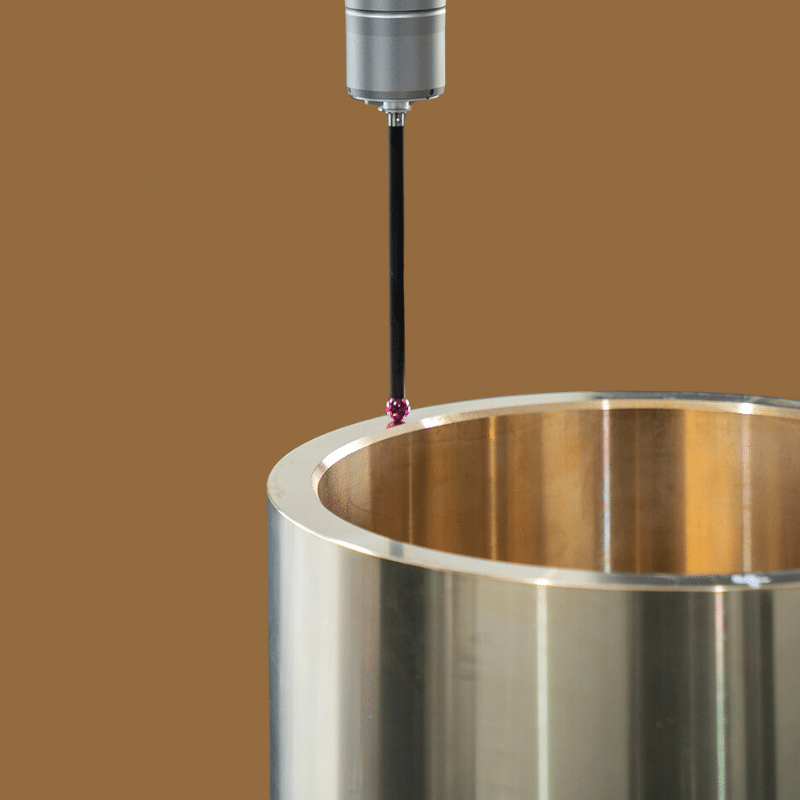
CuSn7ZnPb Tin Bronze Bearing Bushing Overview
CuSn7ZnPb Tin Bronze Bearing Bushing
Common Names: Red Bronze, Leaded Gunmetal
Market Status: Most widely used alloy in the market
International Standards: ASTM B505 C93200, RG7 DIN 1705
Key Features
- Excellent resistance and elongation correlation
- Semi-hard material with high resistance to wear, corrosion, and seawater
- Suitable for general-purpose applications
Chemical Composition
| Element | % Min | % Max | Notes |
|---|---|---|---|
| Cu (Copper) | 81.0 | 85.0 | Includes nickel |
| Ni (Nickel) | – | 2.0 | – |
| P (Phosphorus) | – | 0.10 | – |
| Pb (Lead) | 5.0 | 8.0 | – |
| Sn (Tin) | 6.0 | 8.0 | For continuous/centrifugal castings: Min 5.2% Sn, Max 86.0% Cu |
| Zn (Zinc) | 2.0 | 5.0 | – |
| Al (Aluminum) | – | 0.01 | – |
| Fe (Iron) | – | 0.2 | – |
| S (Sulfur) | – | 0.10 | – |
| Sb (Antimony) | – | 0.3 | – |
| Si (Silicon) | – | 0.01 | – |
Mechanical Properties (Minimum Values)
| Property | Continuous Casting (GC) | Centrifugal Casting (GZ) | Notes |
|---|---|---|---|
| Tensile Strength (Rm, MPa) | 260 | 260 | For pieces with exterior diameter ≤ 300 mm |
| Yield Point 0.2% (Rp0.2, MPa) | 120 | 120 | – |
| Elongation 5D (A, %) | 12 | 12 | – |
| Hardness (HBW 10-1000) | 70 | 70 | – |
Physical Properties
| Property | Value | Unit |
|---|---|---|
| Density | 8.8 | kg/dm³ |
| Specific Heat | 0.356 | J/(g·K) |
| Thermal Expansion | 18.5 | 10⁻⁶ K⁻¹ |
| Thermal Conductivity | 64 | W/(m·K) |
| Electrical Conductivity | 7.5 | MS/m |
Note:
For continuous and centrifugal castings, the minimum tin content is 5.2%, and the maximum copper content for ingots is 86.0%.
Mechanical properties are valid for pieces with an exterior diameter ≤ 300 mm. For larger sizes, values must be agreed upon with the order.
CuSn7ZnPb Bronze Bearings
CuSn7ZnPb is a type of tin bronze alloy commonly used for bearing bushings and other applications requiring good wear resistance, strength, and anti-frictional properties. Here’s a breakdown of its composition and properties:
Advantages:
-
Long service life under moderate loads.
-
Good compatibility with steel shafts.
-
Relatively low maintenance requirements.
Limitations:
-
Not suitable for extremely high loads or speeds.
-
Lead content may be a concern in certain environmentally sensitive applications.
Alternatives:
-
CuSn12: Higher tin content for increased strength and wear resistance.
-
CuPb10Sn10: Higher lead and tin content for better anti-frictional properties.
-
Aluminum Bronze (e.g., CuAl10Fe5Ni5): For higher strength and corrosion resistance.
If you have specific requirements or operating conditions, let me know, and I can help tailor the material selection further!

